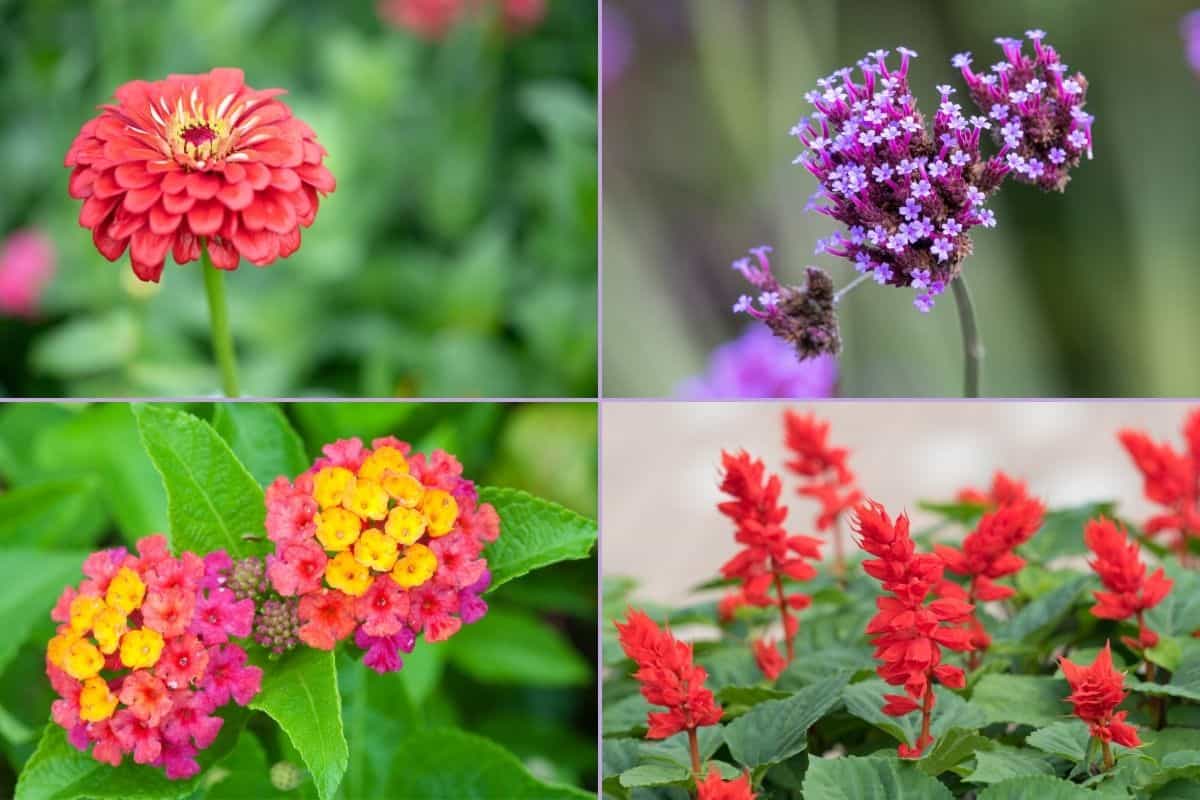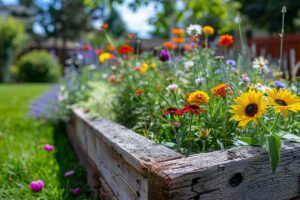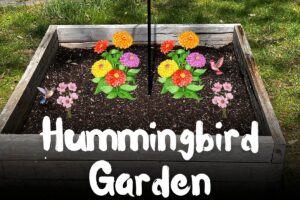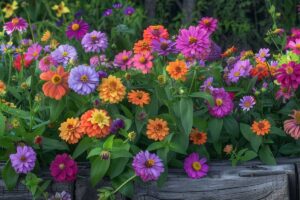This page may contain affiliate links. If you click and buy, we might get a small commission at no cost to you.
Looking to draw more butterflies to your outdoor space? Whether you’re working with a patio, balcony, or small backyard, there are plenty of potted flowers that attract butterflies. These nectar-rich blooms can transform your container garden into a butterfly magnet. This article covers 15 options for butterfly-friendly flowers that work well in pots and give pollinators exactly what they’re looking for.
Potted flowers that attract butterflies
If you want to enjoy butterflies up close, planting the right flowers in your containers is one of the easiest ways to do it. Many nectar-rich blooms thrive in pots and are just as effective at attracting butterflies as garden beds. Here are some of the best potted flowers to start with.
1. Zinnia
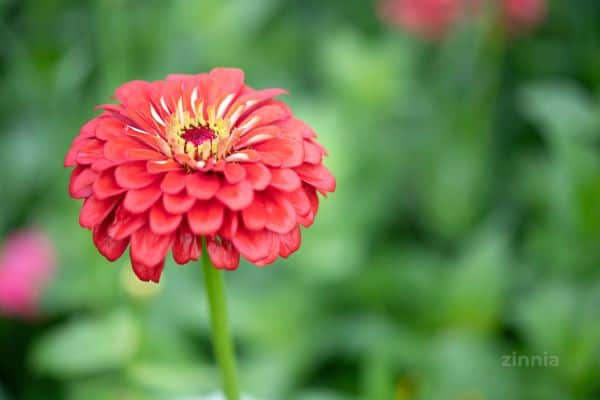
- Bloom time: Summer to frost
- Sun: Full sun
- Type: Annual
Zinnias are one of the most reliable flowers for attracting butterflies to potted plants, thanks to their vivid colors and flat, open blooms that are easy for butterflies to land on. These annuals thrive in full sun and bloom continuously from early summer until frost. For container gardening, compact series like ‘Profusion’ or ‘Zahara’ work best. Zinnias are not native to North America but are widely grown and loved by many pollinators, especially monarchs and swallowtails.
Plant zinnias after the last frost in well-drained soil. They prefer warm temperatures and don’t tolerate cold. Deadheading helps prolong the blooming season, and regular watering at the base of the plant helps prevent mildew. Zinnias are low-maintenance and do great in pots placed on sunny patios or balconies.
2. Lantana
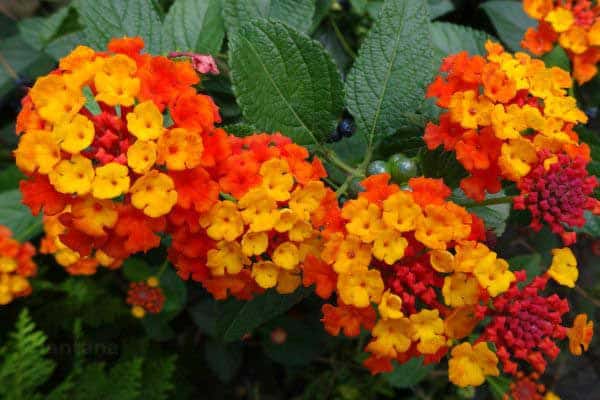
- Bloom time: Late spring through fall
- Sun: Full sun
- Type: Perennial in warm zones (annual elsewhere)
Lantana is a butterfly favorite that produces clusters of brightly colored blooms over a long season. It’s a tender perennial, meaning it behaves as a perennial in USDA zones 9–11 but must be treated as an annual in colder areas. Lantana’s dense flower clusters are loaded with nectar and draw in a steady stream of butterflies all summer long.
Plant lantana after the threat of frost has passed. It thrives in containers, especially in hot, sunny spots, and tolerates drought once established. Some varieties trail while others form upright mounds, giving you flexible design options. While not native to North America, lantana is widely used in butterfly gardens and is especially attractive to swallowtails, sulfurs, and skippers.
3. Milkweed (Butterfly Weed)
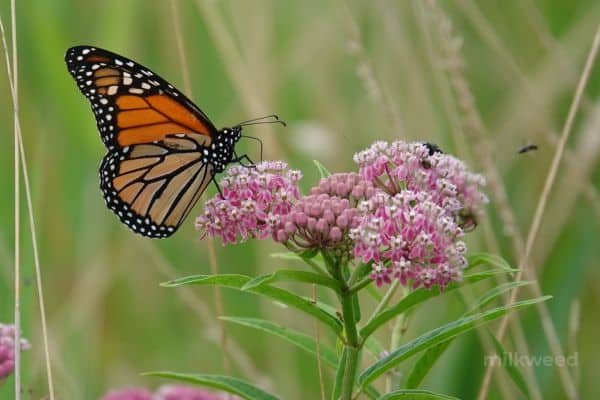
- Bloom time: Summer
- Sun: Full sun
- Type: Perennial
Milkweed, specifically butterfly weed (Asclepias tuberosa), is a native perennial and critical host plant for monarch butterflies. It produces clusters of bright orange or yellow blooms that attract not only monarchs but other butterfly species as well. Its deep roots make it well-suited for larger containers with good drainage.
Plant milkweed in spring after the danger of frost. Since it’s native to much of the U.S., it’s well-adapted to local climates and doesn’t need much maintenance. In addition to providing nectar, it’s one of the few plants where monarchs will lay eggs, making it a must-have for any butterfly-friendly setup.
4. Verbena

- Bloom time: Late spring through summer
- Sun: Full sun
- Type: Annual or perennial depending on variety
Verbena is a compact bloomer that thrives in pots and delivers long-lasting color. Its clusters of small, bright flowers attract butterflies throughout the warm months. Some types are annuals, while others are perennial in warm climates. Either way, they’re reliable bloomers that love the sun and tolerate heat.
Use verbena in hanging baskets, window boxes, or mixed pots. It works well in sunny areas and can tolerate dry conditions once established. While not native to North America, it’s widely used in pollinator-friendly gardens and is especially attractive to smaller butterfly species like skippers and blues.
5. Salvia
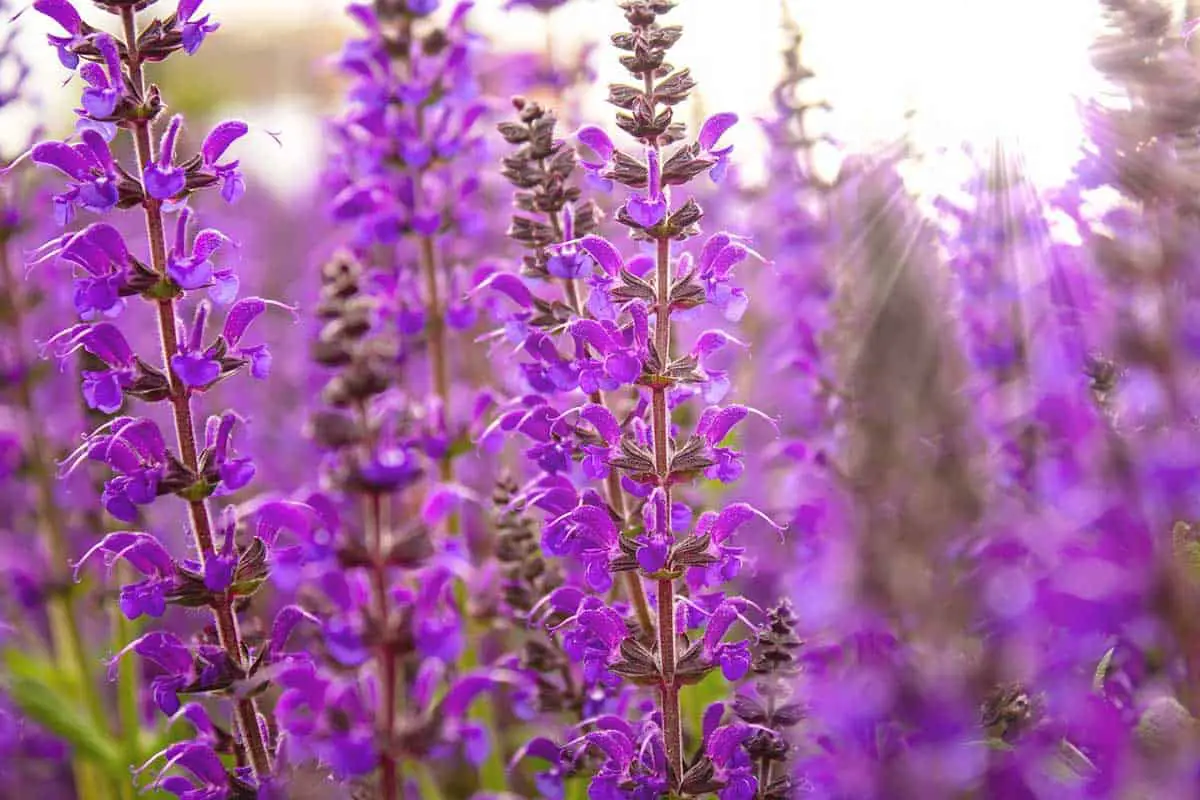
- Bloom time: Late spring through fall
- Sun: Full sun
- Type: Perennial or annual depending on species
Salvia produces tall spikes of tubular blooms that butterflies and hummingbirds both love. It’s available in many sizes and colors, and dwarf or compact types are especially suited for container gardening. Popular species include Salvia splendens (annual) and Salvia nemorosa (perennial).
Plant salvia in full sun after the last frost date. It prefers well-draining soil and doesn’t like to be overwatered. Native varieties like Salvia azurea or Salvia coccinea are excellent choices if you’re looking to support local pollinators. Regular deadheading helps extend the blooming season and keeps your pots looking full and vibrant.
6. Bee Balm (Monarda didyma)
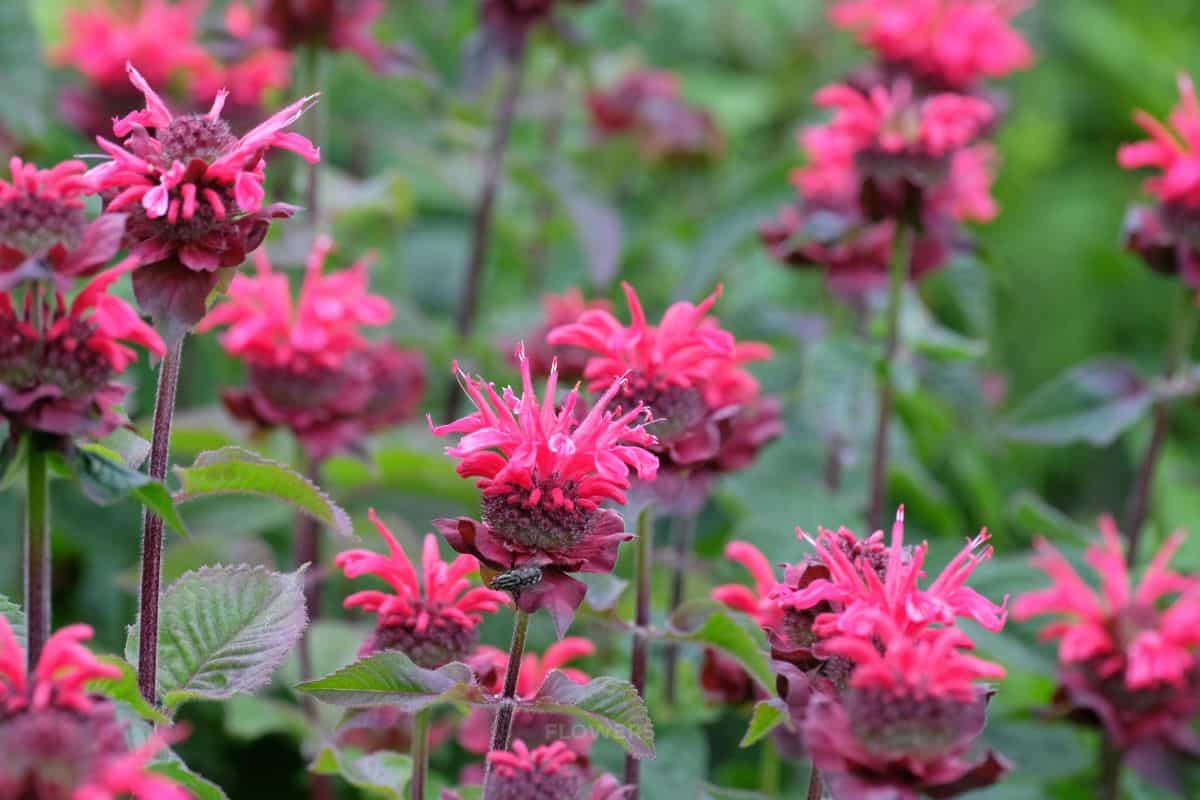
- Bloom time: Mid to late summer
- Sun: Full sun to part shade
- Type: Perennial
Bee balm is a native perennial that’s well known for attracting butterflies, bees, and hummingbirds. Its shaggy, vibrant blooms are rich in nectar and make a bold statement in containers. Dwarf varieties like ‘Petite Delight’ or ‘Balmy Pink’ are best suited for pots, growing compactly without sacrificing flower power.
Plant bee balm in early spring or fall using well-drained soil. It benefits from consistent moisture and good air circulation to prevent powdery mildew. Bee balm thrives in partial to full sun and adds a pop of color and activity to any butterfly container garden.
7. Coreopsis (Coreopsis spp.)
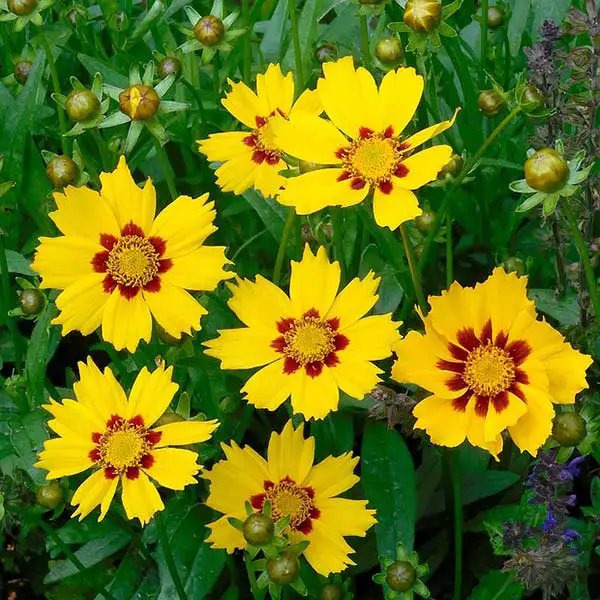
- Bloom time: Early spring through early fall
- Sun: Full sun
- Type: Perennial or annual depending on species
Coreopsis, often called tickseed, is a low-maintenance flower that butterflies love. Its daisy-like yellow or orange blooms are cheerful and long-lasting. Dwarf or compact varieties such as ‘Nana’ or ‘Baby Sun’ are excellent choices for containers.
Many coreopsis species are native to North America, making them great additions to pollinator-friendly gardens. Plant them in full sun and allow the soil to dry slightly between waterings. They tolerate heat and drought well, blooming reliably throughout the summer months.
8. Pentas (Pentas lanceolata)
- Bloom time: Summer to frost
- Sun: Full sun
- Type: Perennial in warm zones (annual elsewhere)
Pentas produce clusters of star-shaped flowers that butterflies find irresistible. They bloom heavily in summer and into fall, especially when grown in full sun. Compact varieties are available for container growing and thrive in well-drained soil with regular watering.
While native to Africa and not North America, pentas perform very well in butterfly gardens. They are especially loved by swallowtails, painted ladies, and other nectar-seeking butterflies. Deadhead spent blooms to encourage constant flowering.
9. Marigold (Tagetes spp.)
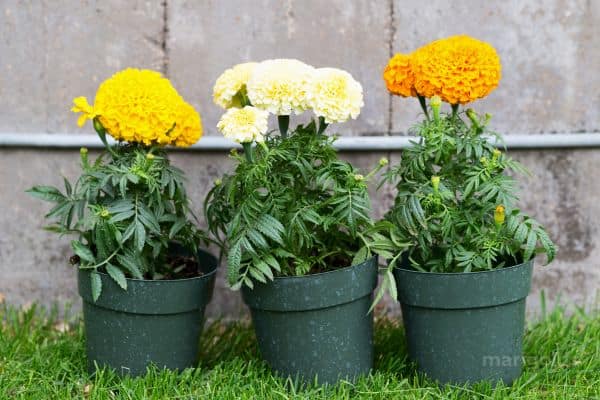
- Bloom time: Spring through frost
- Sun: Full sun
- Type: Annual
Marigolds are classic container flowers that also appeal to certain butterflies. While not the top nectar source, their consistent blooms and bright colors help draw in smaller species. They’re easy to grow and well-suited to beginner gardeners looking to add color and pollinators to their space.
Plant marigolds in spring after the last frost. They like warm temperatures and can handle hot, sunny spots. African marigolds are larger, while French marigolds stay compact—both do well in pots. Use well-drained soil and don’t overwater.
10. Cosmos (Cosmos bipinnatus)
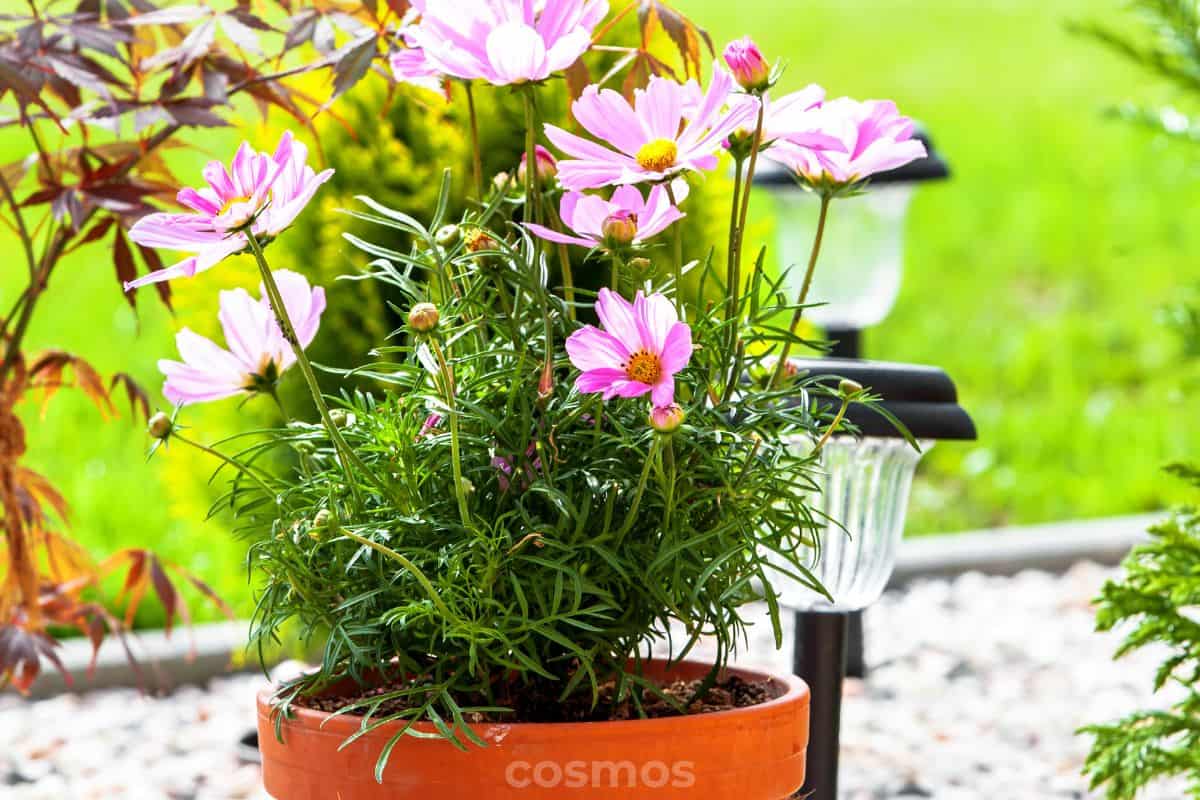
- Bloom time: Summer to frost
- Sun: Full sun
- Type: Annual
Cosmos are tall, airy plants with daisy-like flowers that butterflies love. For containers, look for compact varieties like the ‘Sonata’ series that stay smaller while still providing plenty of blooms. The feathery foliage also adds texture and movement to pots.
Cosmos are not native but are widely planted for their beauty and pollinator appeal. Start them from seed after frost, and they’ll bloom nonstop with very little care. Deadhead regularly and use larger containers to support their height and they’ll do fine in pots.
11. Black-eyed Susan (Rudbeckia hirta)
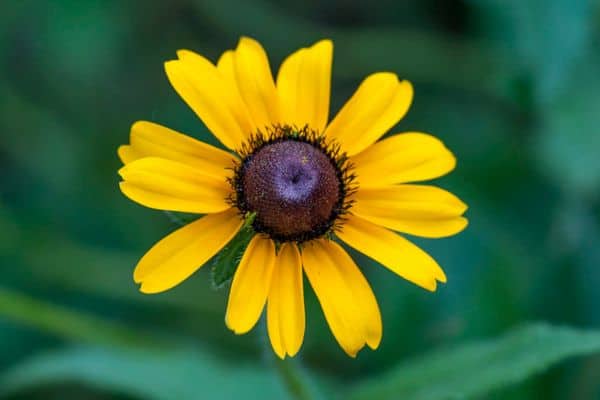
- Bloom time: Midsummer through fall
- Sun: Full sun
- Type: Short-lived perennial or annual
Black-eyed Susan is a bold, native flower with golden yellow petals and a dark central cone. Butterflies are drawn to its nectar, and it performs well in large pots with good drainage. Look for dwarf or container-friendly cultivars like ‘Toto’ or ‘Little Goldstar.’
These flowers are hardy and tolerant of heat, making them a great low-maintenance choice. They bloom from midsummer into fall and work well as a backdrop in mixed pots. Plant in spring for a long season of butterfly activity.
12. Blanket Flower (Gaillardia pulchella)
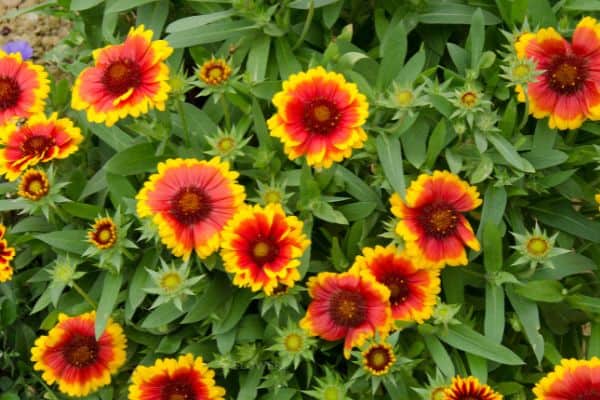
- Bloom time: Summer through fall
- Sun: Full sun
- Type: Short-lived perennial or annual
Blanket flower is a tough, drought-tolerant, sun-loving plant with warm-toned, daisy-like blooms. It’s very attractive to butterflies and performs exceptionally well in containers. Many varieties stay compact and bloom heavily in hot conditions.
Native to parts of North America, this flower is ideal for drought-tolerant or xeriscape-style containers. It prefers sandy or well-drained soil and should not be overwatered. Deadheading will help extend the bloom season into fall.
13. Purple Coneflower (Echinacea purpurea)
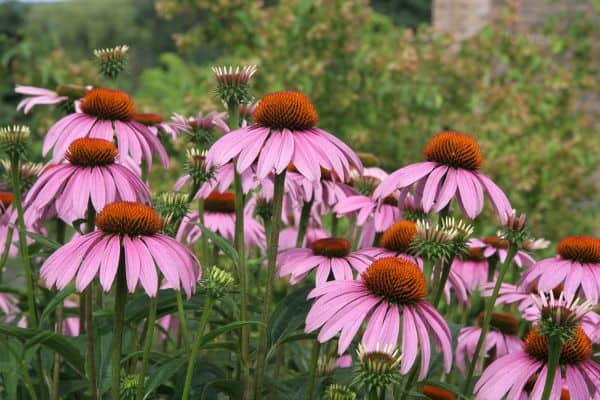
- Bloom time: Summer
- Sun: Full sun
- Type: Perennial
Purple coneflower is a native perennial that offers both beauty and butterfly appeal. Its large, pinkish-purple petals and raised orange cone make it a magnet for pollinators. While typically grown in garden beds, dwarf varieties like ‘PowWow Wild Berry’ do well in deep containers.
Plant coneflowers in spring in full sun and give them room to grow. They are drought-tolerant once established and bloom over a long period. Allow some flowers to go to seed in fall to attract birds and support the full pollinator cycle.
14. Alyssum (Lobularia maritima)
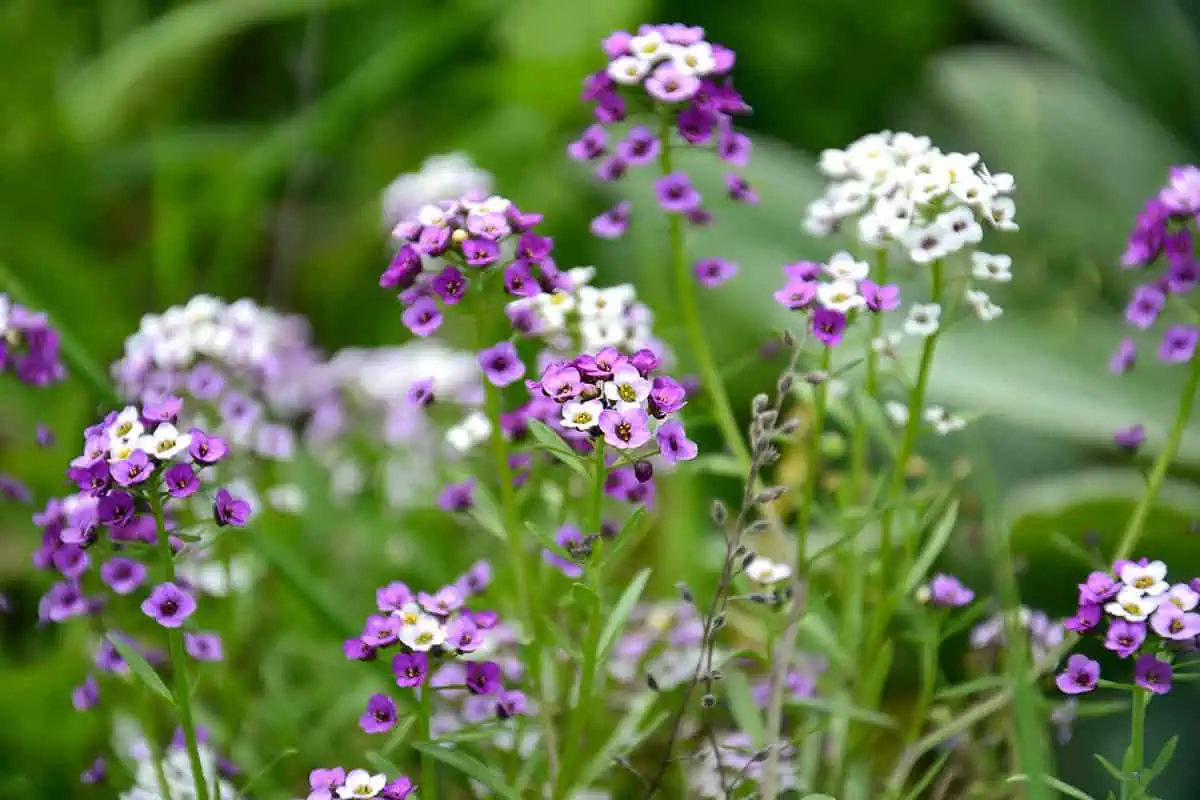
- Bloom time: Spring to fall
- Sun: Full sun to partial shade
- Type: Annual
Alyssum is a fragrant, low-growing flower that works well in small containers or at the edges of larger pots. Its clusters of tiny white, purple, or pink flowers draw in small butterflies and bees. It’s especially useful for softening the edges of a butterfly container garden.
Plant alyssum early in the season. It prefers cooler weather but can continue blooming into fall if deadheaded regularly. While not native, it’s widely used in pollinator gardens for its long bloom period and pleasant scent.
15. Nasturtium (Tropaeolum majus)
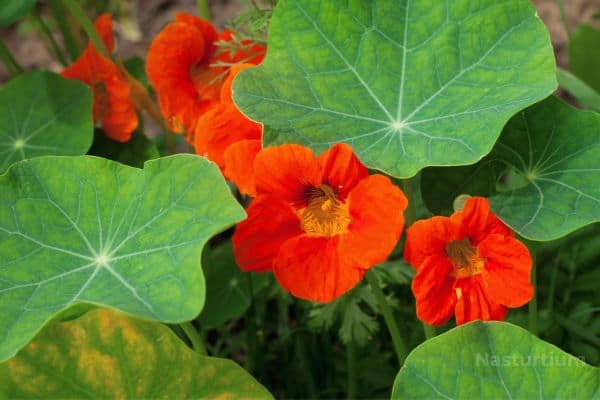
- Bloom time: Summer to early fall
- Sun: Full sun
- Type: Annual
Nasturtiums are easy to grow from seed and produce cheerful, funnel-shaped blooms that butterflies visit for nectar. Their round leaves and trailing or bushy growth make them a great filler or spiller in container arrangements.
These flowers prefer lean soil and don’t need fertilizer. Start them in pots after the last frost and water consistently, but avoid overwatering. While not native, they’re widely grown and offer dual benefits of beauty and pollinator support—plus, the flowers and leaves are edible.
Common butterflies these flowers attract
Planting potted flowers for butterflies doesn’t just bring color to your garden—it also supports some of the most recognizable and beloved butterfly species in North America. Here are a few types you’re most likely to see visiting your containers:
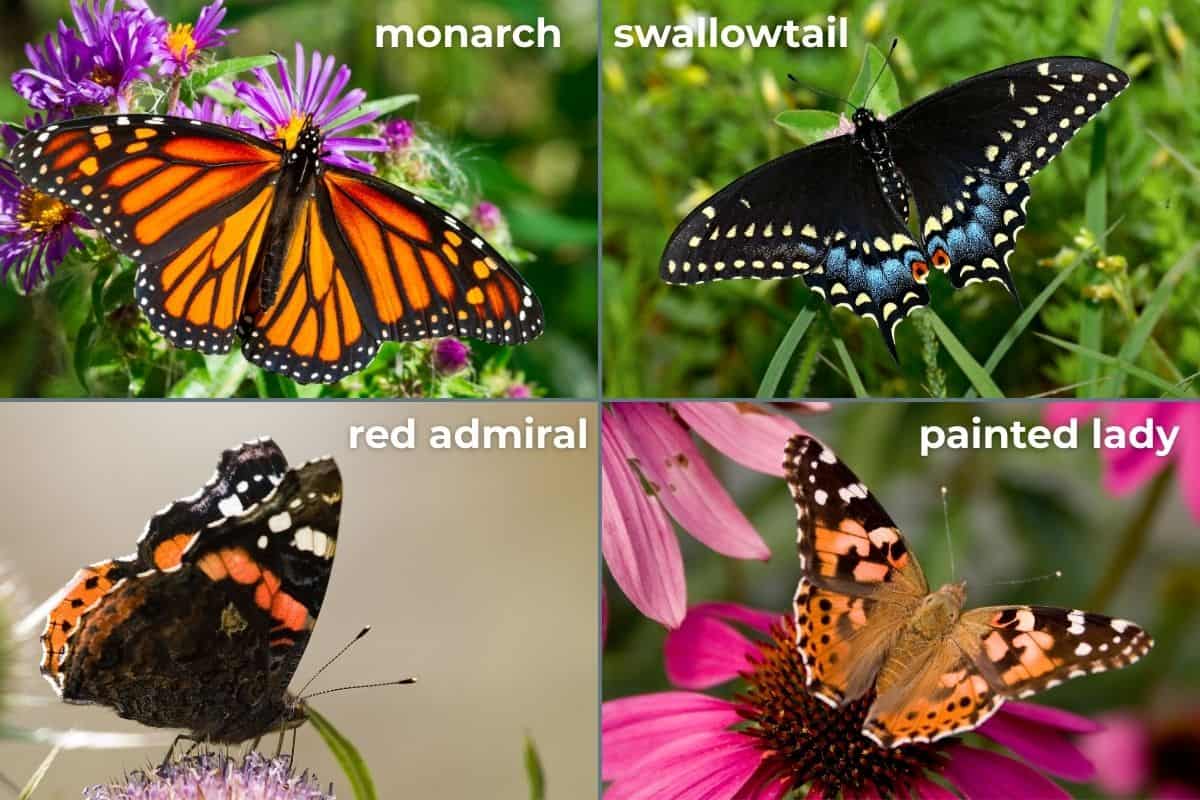
- Monarchs: Especially drawn to milkweed, zinnias, and coneflowers. These migratory butterflies rely on native nectar plants for fuel and milkweed to lay eggs.
- Swallowtails: Attracted to tall, nectar-rich blooms like salvia, lantana, and verbena. Includes the eastern tiger, black, and giant swallowtail species.
- Painted ladies: These adaptable butterflies are frequent visitors to zinnias, cosmos, and blanket flowers. They have a wide range and love sunny gardens.
- Skippers: Small, fast-flying butterflies that love coreopsis, alyssum, and marigolds. Often seen hovering around compact, open blooms.
- Red admirals: These bold, dark butterflies enjoy a variety of blooms like pentas, bee balm, and coneflowers. Known for their quick movements and striking appearance.
